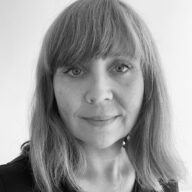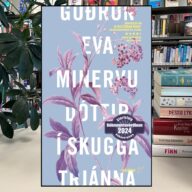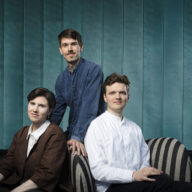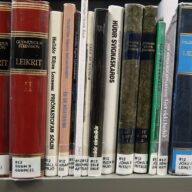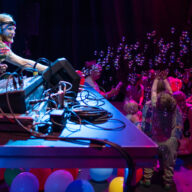Inuuteq Storch listamaður og Heiðar Kári Rannversson listfræðingur og sýningarstjóri fjalla um verk Inuuteqs á sýningunni Að rekja brot/Tracing Fragments.
Listamannaspjallið fer fram á ensku. Verið öll hjartanlega velkomin!
Inuuteq Storch (f. 1989) býr og starfar á Grænlandi og í Kaupmannahöfn. Með verkum sínum vill hann varpa ljósi á hefðbundið líf grænlensku þjóðarinnar, brothættrar menningar á undanhaldi. Hann nam ljósmyndun í New York og Kaupmannahöfn og hefur sýnt verk sín um allan heim.
Um sýninguna Að rekja brot (Tracing Fragments).
Eitt lítið minningabrot getur innihaldið hafsjó af upplýsingum. Listamennirnir sem hér rekja brot sín eiga það sameiginlegt að segja með verkum sínum sögur sem eitt sinn hefðu verið þaggaðar niður. Öll brot sem þau sækja finna þau í helstu byggingareiningu sjálfsins: fortíð sinni og sinna.
Listamennirnir rekja upp þræði sögu nýlenduhyggju, kúgunar, yfirtöku og jaðarsetningu í verkum sínum. Efniskennd umlykur verkin hreinsandi krafti þar sem þau greiða úr hugmyndum um sjálfsmynd og marglaga sambandi okkar við uppruna og arfleifð.
Útkoman er nærgöngul og ögrandi, viðkvæmnislega vongóð en umturnar um leið gildismati okkar á kraftmikinn hátt.
Merkingin er ekki listamannsins eins. Ef við erum öll brotakenndir alheimar sem tengjumst og tilheyrum hvert öðru verða söngvar sjálfsins óhjákvæmilega almennir þegar þeir ferðast um hið opinbera rými. Við speglum okkur í reynslu listamannsins, aftengjum hana og fléttum svo aftur saman í stærra samhengi.
///
The artist Inuuteq Storch and curator Heiðar Kári Rannversson will talk about Storch’s work and practice. Inuuteq Storch is one of the artists participating in the exhibition Tracing Fragments.
Inuuteq Storch (b. 1989) lives and works in Greenland and Copenhagen. Through his work he aims to shed light on the traditional lives of Greenlandic natives, a fragile and vulnerable people whose way of life is gradually disappearing. Storch is educated in New York and Copenhagen and his work is exhibited internationally.
About Tracing Fragments
A tiny, fragmented memory can contain oceans of information. The artists who here trace their fragments are all telling stories that once would have been silenced. The fragments they retrieve come from the self’s main structural unit: their own past, and the past of their people.
Their works unpack stories of colonization, oppression, dispossession and marginalization. The physical-ness of their materials marks the works with a cathartic embrace, examining notions of heritage and identity. They reveal the complexities behind the understanding that where we come from informs our personhood, resulting in works that are intimate yet challenging, delicately hopeful, yet powerfully subversive.
The meaning of a work never belongs solely to the artist. If we are all fragmented universes that connect and belong to each other, the songs of the self inevitably become public when they travel around the public sphere. We reflect ourselves in the artist’s experience, disconnect it and intertwine it again in a larger context.



